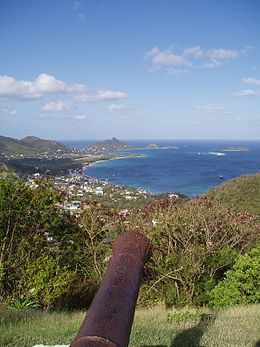데방가
Devanga| 인구가 많은 지역 | |
|---|---|
| 카르나타카, 안드라프라데시, 타밀나두, 케랄라, 오디샤 | |
| 언어들 | |
| 칸나다, 타밀,텔루구, 말라얄람,툴루 주 | |
| 종교 | |
| 대부분 힌두교의 링가야트 종파 | |
| 관련 민족 | |
| 파드마샬리 |
데방가([1][2][3]Lingayat Devanga, Devanga Shetty, Devanga Chettiar)는 인도 남부 카르나타카 주, 케랄라 주, 안드라 프라데시 주, 타밀 나두 주, 오디샤 주에서 주로 발견되는 직물 상품, 직물 제직 및 농업의[2] 점령을 전통적으로 따랐던 남인도 출신의 힌두교 카스트입니다.[4][5]
원산지와 문화
카스트는 고대 힌두 현자인 데발라의 후손이라고 주장합니다.[5]그들은 안드라 프라데시와 카르나타카에서 기원했고 비자야나가라 제국의 통치 기간 동안 타밀나두로 이주했습니다.[6]그들은 힌두 카스트 제도에서 슈드라의 지위를 가지고 있습니다.[7][8][9][10]그러나, 그들은 브라만이 아닌 직업을 가졌음에도 불구하고, 데방가족에게 신성한 텍스트인 데방가 푸라나를 사용하여 브라만의 지위를 주장합니다.[11][12]그들은 그들의 토착 지역 고트라를 산스크리트 고트라로 대체했습니다.[13]
데방가는 산스크리트어로 "신의 몸"을 의미합니다.[14]
종교
데방가와 파드마샬리 공동체는 한때 하나의 독립체였으며, 파드마샬리 공동체는 비슈나브족인 반면, 데방가 요소가 샤이브인 링가이타즘 또는 비라샤주의를 차지하면서 분열이 일어났다는 이론이 있습니다.[15][16]어떤 데방가들은 야뇨파베탐이나 자니바라를 입는 반면, 어떤 사람들은 비라무스티스를 그들의 전통적인 선지자로 여기고, 그들은 계율을 받고 링암을 입습니다.[5]
중세 시대에 베라샤이바 직공들은 바사바와 같은 반 카스트 운동을 지지했습니다.그러나, 그 운동 자체는 다른 베라샤이바들과 브라만들(비 베라샤이바들)에 대한 카스트 우월성으로 소모되었습니다.제작자들은 높은 카스트 지위를 주장하기 시작했고, 1231년에 왕이 전통적으로 높은 카스트들에게 주어진 권리를 주었다고 주장했습니다.[16] 예를 들어, 신성한 실을 쓰고, 가마를 타고, 깃발을 다는 것입니다.
데방가족의 주요 여신은 남부 카르나타카, 안드라, 타밀나두 지역의 스리 라말링가 차우데스와리 암만입니다.[17][4]
중부와 북부 카르나타카 지역에서 데방가 사람들의 주요 여신은 스리 바나샨카리 암마 사원입니다.[18]
데방가 푸라나
1532년경, 고다바리의 데방가스는 텔루구 시인 바드랄링가 카비에게 그들의 쿨라푸라남, 즉 신화사를 써달라고 요청했습니다.그는 다시마트라 드비파디 양식으로 데방가 푸라나를 작곡했습니다.[19]고다바리 데방가스는 또한 안드라 동부에서 온 산스크르티제 데방가스를 도왔습니다.[16]
직종.
이 지역 사회의 대부분의 구성원들은 비단 옷감을 모티브로 엮는 것과 브로케이드, 다마스크, 마테라세를 전문적으로 다루는 전문 장인들이었습니다.이에 따라 그들은 주로 고다바리 지역의 주요 직물 중심지에 집중되었습니다.[15]
그들은 비단으로 옷을 짜는 기술과 아주 질 좋은 면직물로 유명했습니다.베틀을 짜는 일은 보통 남자들이 하는 반면, 여자들은 실을 염색하고 실을 돌리고 아이들은 침울한 것과 같은 일을 돕습니다.그들은 또한 매우 훌륭한 기업가이며 의류 마케팅의 전문가입니다.그들 중 몇몇은 농사에도 종사하고 있습니다.[5]
주목할 만한 사람들
- P. Theagaraya Chetty[20] - T.나가르는 첸나이의 한 지역으로 그의 이름을 따서 지어졌습니다.[21]
주종간 결혼에 대한 처벌
2004년 카르나타카 주 치트라두르가 지역의 벨라구르에 있는 작은 마을의 데방가 지도자들은 카스트 밖의 사람들과 결혼했다는 이유로 10가구에 벌금을 부과하고 사회적으로 공동체에서 배제했습니다.[22]이 결정은 비판을 받았고 위헌이라고[23] 주장되었지만 2011년 치크마갈루르 지역 아잠푸라 시바니 마을의 다섯 가족에게도 비슷한 일이 일어났습니다.[24]
참고문헌
- ^ Gautham, Komal (30 April 2016). "MGR magic still spins votes from Coimbatore weavers". The Times of India. Retrieved 25 September 2019.
- ^ a b Nainar, Nahla (21 March 2014). "Silence of the looms". The Hindu. ISSN 0971-751X. Retrieved 18 November 2018.
- ^ 브라운 대학 "Page.8(Lingayat Devanga), Page.11(Devanga Shetty)",
- ^ a b George, Anubha. "For 500 years, a Kannadiga community of weavers has produced Kerala's iconic white and gold saree". Scroll.in. Retrieved 25 November 2018.
- ^ a b c d Acharya, Prasant Kumar (2003). Sacred Complex of Budhi Santani: Anthropological Approach to Study Hindu Civilization (2003 ed.). New Delhi: Concept Publishing Company. pp. 240–246. ISBN 978-81-8069-049-5.
- ^ Ramaswamy, Vijaya (2014). "Mapping Migrations of South Indian Weavers before, during and after the Vijayanagar Period: Thirteenth to Eighteenth Centuries". In Hoerder, Dirk (ed.). Studies in Global History: Studies in Global Migration History. Vol. 15. Brill. p. 108. ISBN 978-90-04-27136-4.
- ^ Ramu, G. N. (1997). Family and Caste in Urban India: A Case Study. Vikas Publishing House. pp. 28, 171.
- ^ Kaushal, Molly (2001). Chanted Narratives: The Living "katha-vachana" Tradition. Indira Gandhi National Centre for the Arts. p. 123.
- ^ Chaudhary, Bhupen (2006). Indian Caste System: Essence and Reality. Global Vision Publishing House. p. 213.
- ^ Schwalbe, Gustav Albert (1998). Zeitschrift für Morphologie und Anthropologie. Vol. 82–83. E. Schweizerbart'sche Verlagsbuchhandlung. p. 308.
- ^ Ramanujam, Srinivasa (2020). Renunciation and Untouchability in India: The Notional and the Empirical in the Caste Order. Taylor and Francis. pp. 978-0-429-31765-1. ISBN 9781000113600.
- ^ Bhattacharya, Ranjit Kumar (2002). Indian Artisans: Social Institutions and Cultural Values. Anthropological Survey of India. pp. 24–25.
- ^ Ratnam, L. K. Bal (1991). Anthropological Research and Tribal Situation. Centre for Training and Research in Anthropology and Management. p. 43.
- ^ Mysore State Gazateer: Mysore의 정부.111페이지
- ^ a b Swarnalatha, P. (2005). "The Social World of the Weaver". The World of the Weaver in Northern Coromandel, c. 1750 - c. 1850. New Delhi: Orient Blackswan. pp. 36, 37. ISBN 978-81-250-2868-0.
- ^ a b c Reddy, Prabhavati C. (2014). Hindu Pilgrimage: Shifting Patterns of Worldview of Srisailam in South India. Routledge. p. 183.
- ^ "A ritual of pain to connect with the past - Times of India". The Times of India. Retrieved 25 November 2018.
- ^ "Standing the test of Time". Deccan herald. Retrieved 4 April 2017.
- ^ Swarnalatha, P. (2005). "The Social World of the Weaver". The World of the Weaver in Northern Coromandel, c. 1750 - c. 1850. New Delhi: Orient Blackswan. pp. 39–45. ISBN 978-81-250-2868-0.
- ^ Roy, Tirthankar (28 January 2020). The Crafts and Capitalism: Handloom Weaving Industry in Colonial India. Taylor & Francis. ISBN 978-1-000-02469-2.
- ^ "Once upon a time in Thyagaraya Nagar…". The Hindu.
- ^ "Ten families facing 'social boycott'". The Hindu. 22 December 2004. Retrieved 3 May 2015.[데드링크]
- ^ "Seer calls for end to social boycott". The Hindu. 23 December 2004. Archived from the original on 28 November 2016. Retrieved 3 May 2015.
- ^ Khajane, Muralidhara (29 January 2011). "Protection for 'social boycott' victims sought". The Hindu. Retrieved 3 May 2015.
추가열람
 Wikimedia Commons의 Devanga 관련 매체
Wikimedia Commons의 Devanga 관련 매체- Kidder, Robert L. (February 1974). "Litigation as a Strategy for Personal Mobility: The Case of Urban Caste Association Leaders". The Journal of Asian Studies. 33 (2): 177–191. doi:10.2307/2052183. JSTOR 2052183. S2CID 147067108.
- Parthasarathi, Prasannan (2001). The Transition to a Colonial Economy: Weavers, Merchants and Kings in South India, 1720-1800. Cambridge University Press. ISBN 978-0-521-57042-8.


